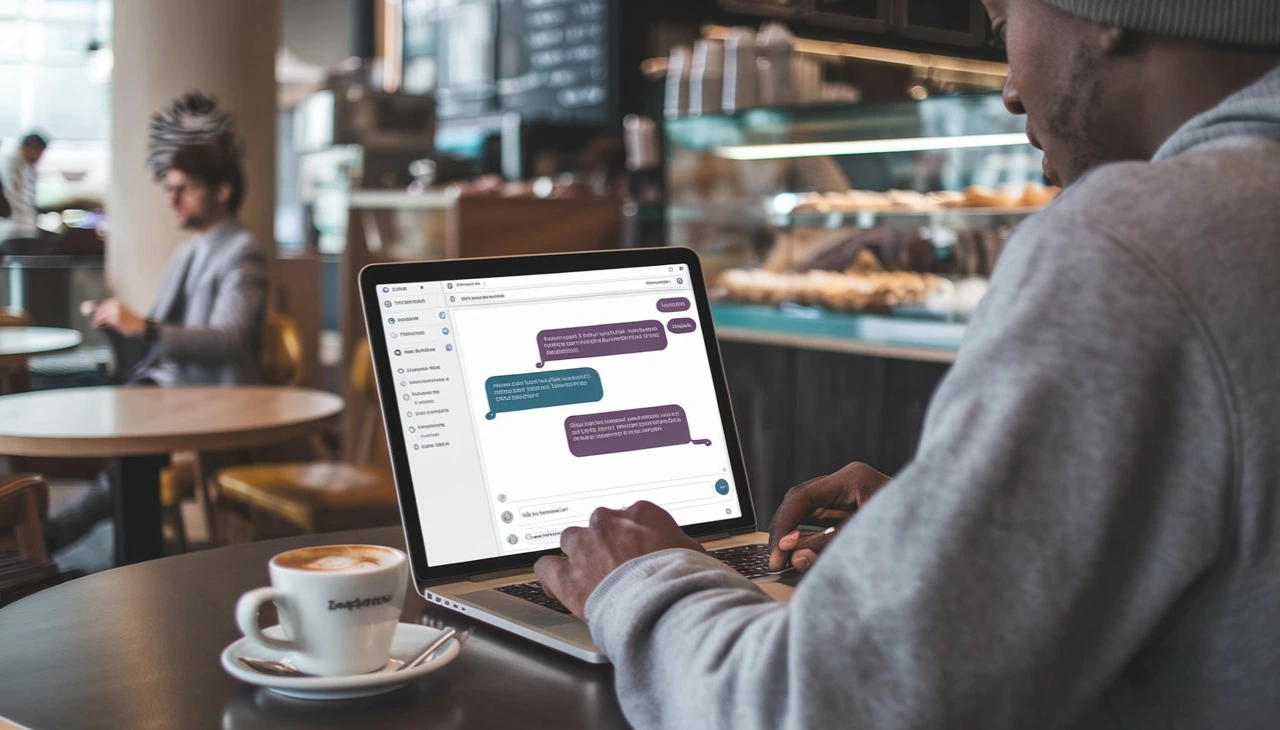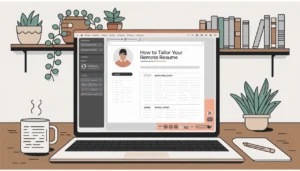How to Handle Difficult Clients as a Freelancer.Do you ever feel like you are sitting with a client who seems like a mountain to climb, not necessarily being a partner in a project? All of the freelancers will have encountered such problems with difficult clients. Effective management of clients is important in order to maintain a work-life balance and succeed in the freelance business model for a long term. In this post, strategies for dealing with difficult clients have been discussed for understanding such clients, building trust, and taking charge of difficult situations with grace.

Understanding Difficult Clients
Different clients, some of which are very difficult, thus causing problems for a freelancer, prove a necessary step in understanding those attitudes. Identification and knowledge about those attitudes will automatically help the freelancer to deal more adequately with them and other similar situations in the future.
Many of the customers are also micromanagers. Of course, it is very trying as they try to thrust their way in every single aspect of the task. Most of these tend to be controlling, interfering with the freelancer’s workflow. Sometimes, it is based on a lack of confidence in the freelancer, while others understand the role of the freelancer for other reasons.
Unrealistic expectations is another tough behavior of clients. Clients may set goals or deadlines that are impossible to meet, or they have a distorted perception about the scope and complexity of the project. It is stressful for freelancers to deal with such unrealistic expectations.
Delayed or non-payment is a serious situation with real financial consequences for freelancers. Clients who fail to pay for work on time or even at all harm freelancers financially and can ruin professional relations. This can be attributed to several factors; sometimes, clients lack sufficient funds, have no clear arrangements for the payment, or simply disrespected the effort put in by freelancers.
Finally, rude or disrespectful communication is hard to handle and brings challenges in working with a client. For instance, some clients can be condescending, aggressive, or simply not pleasant to work with. Such behavior may make it hard for the freelancer to find comfort in the deal and affect the freelancer’s mental health. It could be an issue of personality clash, communication failure, or perhaps quite simply due to unprofessionalism on the part of the client.
It is with this understanding of the common challenging behaviors that freelancers can understand what to expect during working hours and have strategies on how to deal with them. With this understanding, freelancers will be able to note the root causes for such behaviors and thus manage their expectations in relation to the clients positively.
Effective Communication Strategies for Freelancers
Good communication is essential in any freelance work, especially about communicating with difficult clients. The right strategy can be applied in freelancing to achieve good relations and few misunderstandings for a successful fruitful project.
Acquiring an understanding of the client’s needs and concerns also involves active listening. You must listen attentively to what they say, ask appropriate questions for clarification whenever you need it, and acknowledge their perspective through empathy by giving them a nod. This way, you show that you respect their input and are intent on meeting their expectations.
Another good effective client interaction would be clear and unambiguous communication. Communicate in simple words and expressions and avoid complex sentences and jargon, which would confuse the client, and also keep them informed of progress at regular intervals.
Another reason it is also important to set boundaries has to do with the protection of one’s time and energy. Establish clear expectations early, politely decline unreasonable requests, and set clear prioritization for your workload. In this way, you won’t become overworked and may fail to deliver quality because you could only do little.
Utilization of these communication strategies by freelancers in their practice will help build better relations with the clients and resolve issues with clients, which ensures a smooth lifestyle and therefore enables career success.
Building Trust and Rapport with Clients
While building mutual trust and rapport, freelance professionals sustain long-term fruitful client relationships solely based on understanding clients’ perspectives and spotting potential areas of trouble while keeping promises.

Empathy and Understanding
One of the significant elements that establish trust in relationships is empathy and understanding. Putting yourself in the client’s shoes gives you an idea of his needs, concerns, and expectations. You can recognize feelings and anxiety which would prove to that you care about satisfying them.
Proactive Problem Solving
Trust is further enhanced through proactive problem-solving. The ability to predict potential problems before they arise helps you prepare solutions or alternatives ahead of time. Demonstrate your ability to lead when things go wrong and thereby assure clients that their project is in good hands.
Building Trust Over Time
Building trust is made possible by consistency and reliability. This can be about getting the things done on time, within deadlines, being very open in communication with your clients, and honoring your promises. With the more consistency of setting expectations high, the more you establish your reputation as dependability and professionalism personified.
In a nutshell, the development of trust and rapport with clients is through empathy, proactive problem-solving, and the promise-keeping delivery. Building such qualities in freelancers, therefore, will help those who are oriented to these values develop long-lasting relations and stabilized connections.
Handling Difficult Situations
Freelancing usually requires one to deal with clients whose personalities may be different, so also their expectations. Most clients are professional and easy going. There might, however come instances that present a conflict. Below are some strategies on dealing with those problematic deals dealing with conflicts:

Choose a Calm Environment: Choose a neutral space where you can discuss the problem without distractions. A quiet room or virtual meeting can facilitate a good and productive discussion.
Listen Actively: Give the client your undivided attention and try to understand the client’s viewpoint. Ask clarifying questions to ensure you have an informed understanding of the problems of a client.
Find Common Ground: Look for something on which you both can agree, no matter how minor the point. This is going to help in having a relatively more favorable atmosphere where a resolution could be found.
Negotiating Terms and Conditions:
Stuck to Your Guns, Flexible in Terms: You hold stiff on some fixed terms but bend on others. That will help build a guarantee that there is an intent to collaborate towards the solution.
Options for Compromise: Come up with alternative arrangements or possible solutions that you might be able to accept with the client. Demonstrate your flexibility to commit to the client’s requirements while also protecting your own.
Definition of Limits and Consequences:
Communicating Boundaries: Clarify boundaries and expectations on the project outset. That will help to prevent any potential misunderstanding and set the tone for the working relationship.
Follow-Through: If a client violated the agreement several times, this means that there is a need to implement consequences. In this case, it could be avoided work, decreased project scope, or termination.
Some of these strategies assist freelancers on their way through problem situations while holding on to their clients. First, remember that open, honest communication, understanding, and problem-solving tends to resolve most conflicts and develop trust.
Conclusion
Working with challenging clients is part of the freelancing world, but proper strategies can help smoothen the ride toward professionalism and efficiency. The essence of proper communication develops mutual understanding and eliminates possibilities of mischief. Trust builds over time, which is a robust ground for their smooth and positive working relationship. Mostly, handling tough situations tactfully and diplomatically is essential in finding solutions that best benefit one’s self and the other party.
Freelancers must proactively develop such strategies in response to challenging clients to survive. Personal experiences are sure to empower others who face similar issues, while actionable advice would enable such individuals to learn from the pain of others. For example, including resourceful material and maybe participating in the readers’ Q&A sessions or polls may be developed in order to create a feeling of community. Implementing these strategies may, besides overcoming the challenges, further help freelancers to succeed through a good professional relationship and successful career.
Frequently Asked Questions (FAQs)
Q: How do I identify a difficult client before I agree to work with them?
A: Pay attention to red flags during the initial consultation or communication. Be wary of clients who are overly demanding, have unrealistic expectations, or exhibit disrespectful behavior.
Q: What should I do if a client refuses to pay for my services?
A: Have a clear contract in place that outlines payment terms and consequences for non-payment. If necessary, consider legal action or mediation.
Q: How can I set boundaries with a client who is constantly micromanaging my work?
A: Have a candid conversation with the client, explaining the importance of trust and your need for autonomy. Refer to your contract and project scope to reinforce your boundaries.
Q: What if a client is consistently rude or disrespectful?
A: Document all instances of inappropriate behavior. If the situation escalates, consider terminating the project or seeking professional advice.
Q: How can I maintain a positive attitude when dealing with a difficult client?
A: Practice self-care, take breaks, and remind yourself of your professional goals. Focus on the positive aspects of your work and the satisfaction you derive from overcoming challenges.






